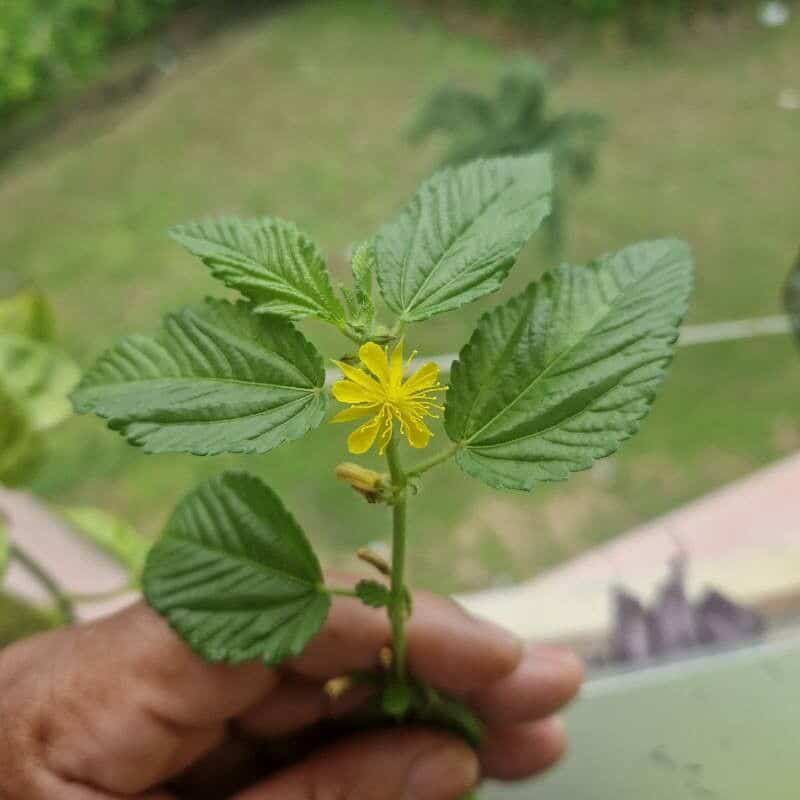Propagating Corchorus hirtus: A Guide to Cultivating the Jew’s Mallow
Introduction:
Corchorus hirtus, commonly known as Jew’s Mallow, is a fascinating annual or short-lived perennial herb belonging to the Malvaceae (mallow) family. Characterized by its hairy leaves and small, yellow flowers, it possesses a certain rustic charm that appeals to many gardeners. While not as widely cultivated as some other ornamentals, its unique appearance and potential medicinal properties make it a rewarding plant for enthusiasts. However, propagating Corchorus hirtus presents some unique challenges, making successful cultivation a source of considerable satisfaction.
Seed Germination:
Currently, there are no known reliable methods for seed germination propagation of Corchorus hirtus. While seeds may be produced, germination rates are reportedly extremely low, and consistent success has yet to be documented in horticultural literature. Further research is needed to determine if specific pre-treatments (such as scarification or stratification) might improve germination rates.
Cuttings:
Cuttings offer a more promising approach to propagating Corchorus hirtus.
Challenges: The success of cuttings depends heavily on timing and technique. Taking cuttings from actively growing, healthy stems is crucial. Older, woody stems are less likely to root.
Practical Tips: Take semi-hardwood cuttings (partially mature stems) in late spring or early summer. Use a sharp, clean knife or shears to make 4-6 inch cuttings, removing lower leaves to prevent rot. Dip the cut ends in rooting hormone powder before planting in a well-draining propagation mix (e.g., perlite and peat moss). Keep the cuttings consistently moist but not waterlogged under high humidity conditions (e.g., using a humidity dome or propagator).
Rewards: Cuttings provide a relatively quick method to propagate genetically identical plants, ensuring consistency in traits. This is particularly beneficial if you have a particularly desirable specimen.
Division:
Division is not a viable method for propagating Corchorus hirtus as it is typically an annual or short-lived perennial that doesn’t form dense clumps suitable for division.
Tissue Culture:
Tissue culture, while potentially successful for Corchorus hirtus, is a complex and specialized technique requiring laboratory equipment and expertise.
Challenges: Establishing aseptic conditions and selecting appropriate media and growth hormones are crucial for successful tissue culture. This method is expensive and requires specific training and facilities.
Practical Tips: While detailed protocols would need to be developed specifically for Corchorus hirtus, generally, tissue culture would involve sterilizing plant material, cultivating it on growth media to induce callus formation and shoot proliferation, then rooting the resulting plantlets before transferring them to soil.
Rewards: Tissue culture offers the potential for mass propagation of disease-free plants, preserving valuable genetic material, and producing a large number of plants from a small initial sample.
Conclusion:
Propagating Corchorus hirtus presents unique hurdles; seed germination is unreliable, division is impossible, and tissue culture remains a high-skilled, resource-intensive option. Cuttings offer the most accessible and potentially successful method for the average gardener. Overcoming these challenges makes the successful propagation of this interesting plant all the more rewarding. The unique satisfaction comes from understanding the nuances of the plant’s propagation and applying your horticultural skills to overcome its inherent difficulties. Don’t be discouraged by initial setbacks – experiment with different cutting techniques and methods, and persist in your efforts. The beauty and peculiarity of a successfully grown Corchorus hirtus will more than compensate for the effort.

